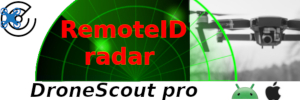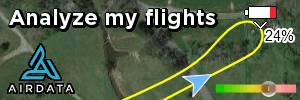Application used on mobile device: DJI GO 4 (updated on 03/16/2017)
Description of the operation when Mavic flew away: At the end of the flight, I hovered Mavic Pro and started descending to 100 meters. During the process of descending, when the Mavic pro was 103 meters height, it suddenly lost signal, the screen got black and the remote controller showed the message "connecting...".
The "return to home" failed and the Mavic Pro never came back. After having waited for 10 minutes for the drone to return home, I decided to go to the site of the incident but I did not find the Mavic Pro.

DJI’S FIRST ANALYSES
1. The aircraft was piloted under P-GPS mode, and responded to the pilot’s control well; home point: -15.7810764 -47.8605893;
2. T=12-18, h=103m, d=2080m, flight record ended; disconnected point: -15.7977300 -47.8695807
3. RTH altitude was 30m; According to google earth, aircraft would crash into a building between home point and disconnected point during RTH process;

According to the analysis, the incident was not caused by any product malfunction factors. As such, we could not provide warranty service.
MY OBJECTION
the claim that the MAVIC PRO would have crashed into a building because the RTH altitude was 30 m cannot prevail.
According to MAVIC PRO user manual, page 16, after entering RTH mode, MAVIC PRO will ascend to the pre-set RTH altitude only if its current altitude is lower than the pre-set altitude. However, if the current altitude is higher than the pre-set altitude, MAVIC PRO will keep the current altitude and return home. It will not descend to the pre-set altitude.
It´s undisputed, then, that the aircraft was high enough to properly return home without crashing into the 10 floor building you referred to, which is no more than 30m height.

In any case, even if the RTH altitude was 30m, we cannot forget that the obstacle avoidance feature would prevent the aircraft to crash into the building. This feature makes the aircraft ascend to avoid the obstacles it detects (MAVIC PRO user manual, page 16 and 17).


DJI'S SECOND ANALYSES
2. The aircraft returned back home at relative height 103m, because it was higher than the RTH altitude.
3. The building was of pure color and about 10 floor not 9 from the picture offered. It is stated clearly on the
manual that the aircraft could not avoid such kind of obstacles. Please refer to the manual:
MY OBJECTION
DJI stated categorically that “the aircraft returned back home at relative height 103m,” but, since “the
building was of pure color and about 10 floor… the aircraft could not avoid such kind of obstacles.” In other
words, the aircraft returned home but crashed into a building on the way back home because it was of pure
color. Respectfully, there is no evidence that the aircraft crashed into a building during the RTH procedure.
If you may, DJI can google the question to find out that the average height of a 10 floor building is 30 m
(3 meters for each floor).
The analyses of the evidences lead to the conclusion that it would be impossible for the MAVIC PRO to crash into a 10 floor building, due to the fact that the building have a maximum height of 30 meters and MAVIC PRO “returned back home at relative height 103m”. If MAVIC PRO “returned back home at relative height 103m,” how could it crash into a 30 meter height building?

DJI'S THIRD ANALYSES
If we understand it correctly, you want another analysts to further look into your case, right? Actually
we have especially contacted head of the data analysis team for this case. Please refer to below:
Right before the incident, the pilot pulled throttle downward to fly aircraft from 182m in altitude to 103m in altitude before it lost connection, which was inappropriate.
???????????????????????????????????????????????????????
Please, help me solve this issue. I really didn't understand DJI's conclusion...
Description of the operation when Mavic flew away: At the end of the flight, I hovered Mavic Pro and started descending to 100 meters. During the process of descending, when the Mavic pro was 103 meters height, it suddenly lost signal, the screen got black and the remote controller showed the message "connecting...".
The "return to home" failed and the Mavic Pro never came back. After having waited for 10 minutes for the drone to return home, I decided to go to the site of the incident but I did not find the Mavic Pro.
DJI’S FIRST ANALYSES
1. The aircraft was piloted under P-GPS mode, and responded to the pilot’s control well; home point: -15.7810764 -47.8605893;
2. T=12-18, h=103m, d=2080m, flight record ended; disconnected point: -15.7977300 -47.8695807
3. RTH altitude was 30m; According to google earth, aircraft would crash into a building between home point and disconnected point during RTH process;

According to the analysis, the incident was not caused by any product malfunction factors. As such, we could not provide warranty service.
MY OBJECTION
the claim that the MAVIC PRO would have crashed into a building because the RTH altitude was 30 m cannot prevail.
According to MAVIC PRO user manual, page 16, after entering RTH mode, MAVIC PRO will ascend to the pre-set RTH altitude only if its current altitude is lower than the pre-set altitude. However, if the current altitude is higher than the pre-set altitude, MAVIC PRO will keep the current altitude and return home. It will not descend to the pre-set altitude.
It´s undisputed, then, that the aircraft was high enough to properly return home without crashing into the 10 floor building you referred to, which is no more than 30m height.
In any case, even if the RTH altitude was 30m, we cannot forget that the obstacle avoidance feature would prevent the aircraft to crash into the building. This feature makes the aircraft ascend to avoid the obstacles it detects (MAVIC PRO user manual, page 16 and 17).
DJI'S SECOND ANALYSES
2. The aircraft returned back home at relative height 103m, because it was higher than the RTH altitude.
3. The building was of pure color and about 10 floor not 9 from the picture offered. It is stated clearly on the
manual that the aircraft could not avoid such kind of obstacles. Please refer to the manual:
MY OBJECTION
DJI stated categorically that “the aircraft returned back home at relative height 103m,” but, since “the
building was of pure color and about 10 floor… the aircraft could not avoid such kind of obstacles.” In other
words, the aircraft returned home but crashed into a building on the way back home because it was of pure
color. Respectfully, there is no evidence that the aircraft crashed into a building during the RTH procedure.
If you may, DJI can google the question to find out that the average height of a 10 floor building is 30 m
(3 meters for each floor).
The analyses of the evidences lead to the conclusion that it would be impossible for the MAVIC PRO to crash into a 10 floor building, due to the fact that the building have a maximum height of 30 meters and MAVIC PRO “returned back home at relative height 103m”. If MAVIC PRO “returned back home at relative height 103m,” how could it crash into a 30 meter height building?

DJI'S THIRD ANALYSES
If we understand it correctly, you want another analysts to further look into your case, right? Actually
we have especially contacted head of the data analysis team for this case. Please refer to below:
Right before the incident, the pilot pulled throttle downward to fly aircraft from 182m in altitude to 103m in altitude before it lost connection, which was inappropriate.
???????????????????????????????????????????????????????
Please, help me solve this issue. I really didn't understand DJI's conclusion...









